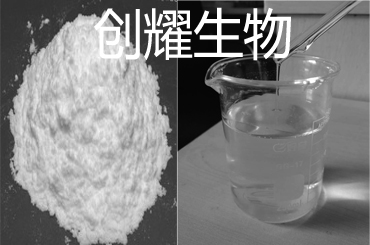What hard skills does hydroxypropyl methylcellulose have in cement mortar!

In the ready mixed mortar, only a little hydroxypropyl methyl cellulose can significantly improve the performance of wet mortar, thus it can be seen that hydroxypropyl methyl cellulose is a major additive affecting the construction performance of mortar.
Different varieties, different viscosity, different particle size, different viscosity and addition amount of HPMC have different effects on the performance of dry powder mortar. At present, many masonry and plastering mortar have poor water retention performance, and water slurry separation will occur after a few minutes of standing. So it is very important to add HPMC in cement mortar.
Below and small make up a detailed look at the hydroxypropyl methylcellulose in cement mortar what hard skills!
Hydroxypropyl methyl cellulose water retention is an important property of methyl hydroxypropyl methyl cellulose. It is also the performance concerned by many domestic dry powder mortar manufacturers, especially in the southern areas with high temperature.
Hydroxypropyl methyl cellulose plays an irreplaceable role in the production of building materials, especially in the production of special mortar (modified mortar).
The viscosity, content, environmental temperature and molecular structure of HPMC have great influence on its water retention performance. Under the same conditions, the higher the viscosity of HPMC is, the better the water retention is; the higher the content of HPMC is, the better the water holding capacity is. Usually, the little amount of HPMC can greatly improve the water retention rate of mortar. When the content reaches a certain level, the increasing trend of water retention rate becomes slow; with the increase of ambient temperature, the water retention of cellulose ether is generally reduced, but some modified hydroxypropyl group is Methyl cellulose also has good water retention at high temperature, and hydroxypropyl methyl cellulose with lower substitution degree has better water retention performance.
The hydroxyl group on hydroxypropyl methylcellulose molecule and oxygen atom on ether bond will combine with water molecule to form hydrogen bond, which makes free water into binding water, thus playing a good role in water retention; the mutual diffusion between water molecule and hydroxypropyl methyl cellulose molecular chain makes water molecule enter into the inner of hydroxypropyl methyl cellulose macromolecular chain, and is strongly constrained, thus forming the self-assembly of water molecule The results show that the water holding capacity of cement slurry is improved by wrapping water with water; the rheological property, porous network structure and osmotic pressure of fresh cement paste are improved by HPMC, or the membrane forming property of HPMC hinders the diffusion of water.
Hydroxypropyl methylcellulose - thickening and thixotropy
Hydroxypropyl methyl cellulose (HPMC) can significantly increase the bonding ability between wet mortar and base course, and improve the anti sag performance of mortar. It is widely used in plastering mortar, brick bonding mortar and external thermal insulation system. The thickening effect of HPMC can also increase the anti dispersion ability and homogeneity of fresh materials, prevent the stratification, segregation and bleeding of materials, and can be used in fiber reinforced concrete, underwater concrete and self compacting concrete.
The thickening effect of HPMC on cement-based materials comes from the viscosity of HPMC solution. Under the same conditions, the higher the viscosity of HPMC is, the better the viscosity of the modified cement-based material is. However, if the viscosity is too high, the fluidity and operability of the material will be affected (such as sticking plaster knife). The viscosity of HPMC is very low for self leveling mortar and self compacting concrete with high fluidity requirements. In addition, the thickening effect of HPMC will increase the water demand of cement-based materials and increase the output of mortar.
HPMC aqueous solution with high viscosity has high thixotropy, which is also a major characteristic of HPMC. The aqueous solution of methyl cellulose is usually pseudoplastic and non thixotropic, below the gel temperature, but it exhibits Newtonian flow at low shear rate. The pseudoplasticity increases with the increase of molecular weight or concentration of hydroxypropyl methylcellulose, and has nothing to do with the type of substituent and degree of substitution. Therefore, the same viscosity grade of hydroxypropyl methylcellulose, whether MC, HPMC, HEMC, as long as the concentration and temperature remain constant, always show the same rheological properties. When the temperature is increased, the structure gels are formed and highly thixotropic flow occurs.
Hydroxypropyl methyl cellulose with high concentration and low viscosity exhibits thixotropy even below the gel temperature. This property is of great benefit to the construction adjustment of leveling and sagging of building mortar. It needs to be explained here that the higher the viscosity of HPMC is, the better the water holding capacity is. However, the higher the viscosity is, the higher the molecular weight of HPMC is, and the solubility of HPMC is correspondingly reduced, which has a negative impact on the mortar concentration and construction performance.
HPMC air entrainment
HPMC has obvious air entraining effect on fresh cement-based materials. Hydroxypropyl methylcellulose (HPMC) has hydrophilic groups (hydroxyl group, ether group) and hydrophobic group (methyl and glucose ring) at the same time. It is a kind of surfactant, which has surface activity and has air entraining effect. The air entraining effect of HPMC will produce "ball" effect, which can improve the working performance of fresh materials, such as increasing the plasticity and smoothness of mortar in the operation process, which is conducive to the paving of mortar; it will also increase the output of mortar and reduce the production cost of mortar; but it will increase the porosity of hardened material and reduce its strength and elasticity
Mechanical properties such as modulus.
As a surfactant, hydroxypropyl methylcellulose has a good effect on cement particles
{aspcms:comment}





